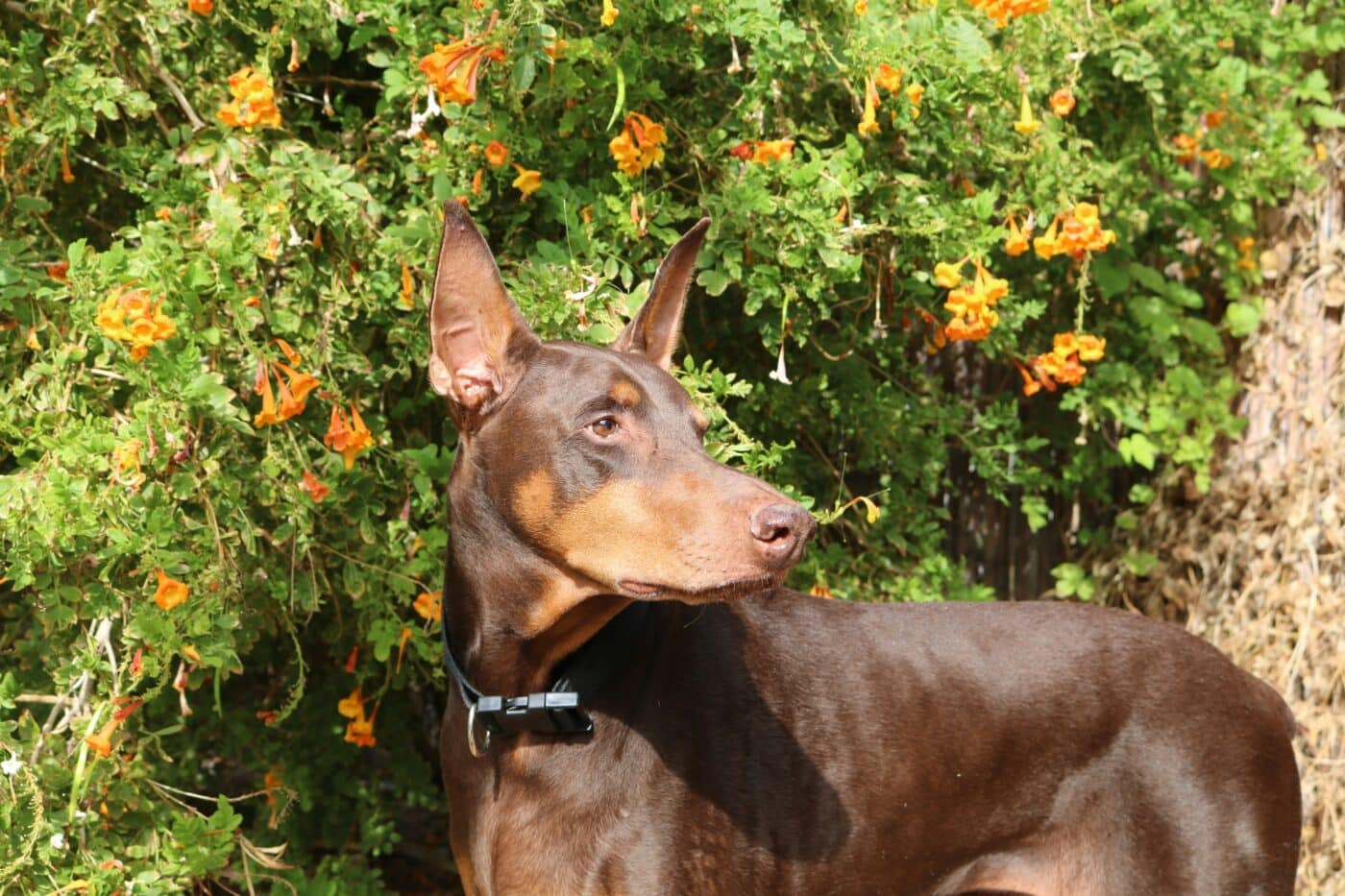Dobermans are known for their sleek, muscular bodies, alert expressions, and unwavering loyalty. These elegant and energetic dogs often seem ageless with their boundless energy and protective instincts. But even the most robust Doberman will eventually start to show signs of aging. When does this transformation from a spry guard dog to a dignified elder take place? In this fun and humorous guide, we’ll explore the various stages of a Doberman’s life, pinpointing the telltale signs that your fierce protector is becoming a senior citizen. So, grab a comfy spot, and let’s dive into the world of aging Dobermans, where wisdom and gray hairs go paw in paw.

1. The Puppy Phase: From Birth to 1 Year
From the moment they’re born, Dobermans are little bundles of energy and curiosity. During the puppy phase, which lasts up to about 1 year, they are all about exploring, chewing, and zooming around the house. These adorable furballs grow rapidly and are constantly on the go, eager to learn about the world and their place in it. At this stage, old age is a distant concept—they’re too busy chasing their tails and discovering new scents to even think about slowing down.
2. The Adolescent Years: 1 to 2 Years
As Dobermans transition from puppies to adolescents, they retain their high energy levels but start to show more independence. This period, from 1 to 2 years old, can be likened to the teenage years, filled with boundless curiosity and occasional rebellious behavior. They might test boundaries and show a bit of selective hearing, especially when something more interesting catches their attention. Despite their growing maturity, they are still very much young at heart, full of life and mischief. Old age is nowhere on their radar—they’re too busy perfecting their guarding skills and enjoying life to the fullest.
3. The Prime of Life: 3 to 6 Years
Between the ages of 3 and 6, Dobermans are in their prime. This stage is characterized by peak physical fitness, mental sharpness, and a balanced temperament. They have matured from their puppy antics but still possess plenty of energy for playtime, training, and guarding duties. Your Doberman is now a confident, loyal companion, fully equipped to handle any situation. Old age is still a distant thought—they’re thriving and making the most of their vibrant, active lives.
4. The Mature Years: 7 to 9 Years
As Dobermans enter their mature years, around 7 to 9 years old, you might start to notice some subtle signs of aging. They may not sprint as fast or jump as high as they used to, and they might enjoy longer naps. This stage is akin to middle age in humans—they might slow down a bit, prefer more rest, and become more selective about their activities. While they may show some early signs of aging, they are far from old. They are seasoned, wise, and still very much full of life.
5. The Senior Stage: 10 Years and Beyond
Once your Doberman hits 10 years old, they are officially considered a senior dog. However, don’t expect them to suddenly become old and frail. Many Dobermans maintain their sharp minds and protective instincts well into their senior years. They might slow down, take more naps, and show some gray around their muzzle, but they still have that distinctive Doberman spark. Their senior years are a time for gentle play, extra cuddles, and lots of love. Even as they age, they remain vigilant and loyal, continuing to watch over their family with unwavering dedication.
6. Signs of Aging in Dobermans
As Dobermans age, several signs indicate they’re entering their senior years. These can include graying fur around the muzzle and eyes, reduced energy levels, and increased stiffness or difficulty in movement, often due to arthritis. Changes in hearing and vision, such as cloudiness in the eyes or less responsiveness to sounds, are also common. They may sleep more and show less interest in high-energy activities. Regular vet check-ups are crucial to monitor and manage these signs, ensuring your Doberman remains healthy and comfortable.
7. Caring for Your Senior Doberman
Caring for a senior Doberman involves making several adjustments to accommodate their changing needs. Provide a balanced diet formulated for senior dogs, with supplements if necessary. Ensure they get regular, gentle exercise to maintain their mobility and weight. Soft bedding can help ease joint pain, and ramps or steps can make it easier for them to get on and off furniture. Regular vet visits are essential to catch and treat any health issues early. Most importantly, give them plenty of love and attention—they’ve earned it after years of loyal companionship and protection.
A Doberman reaches old age around 10 years old, but their spirited nature and loyal heart often persist well into their senior years. From their energetic puppy days to their wise and protective elder years, Dobermans bring joy, security, and unwavering love to their families. Embrace their transition into old age with the same enthusiasm and care they’ve shown you throughout their lives. Providing them with the necessary care and comfort ensures they enjoy their golden years to the fullest. Whether they’re standing guard or snuggling up for a nap, your Doberman’s love and loyalty remain timeless.
Frequently Asked Questions Someone Might Have About Their Aging Doberman

 Toledo, United States.
Toledo, United States.